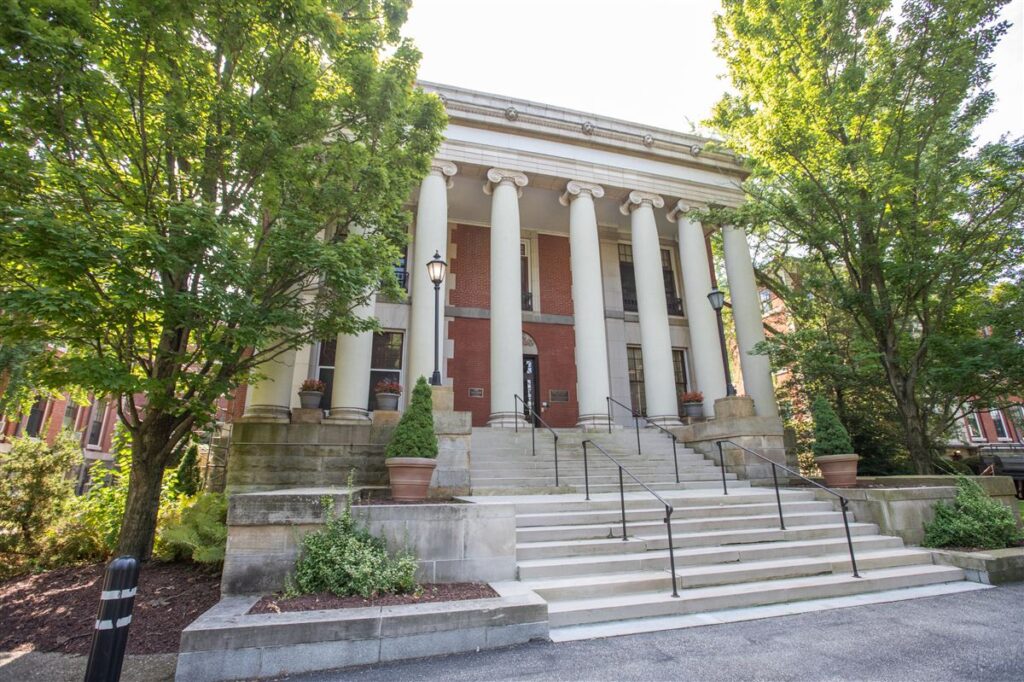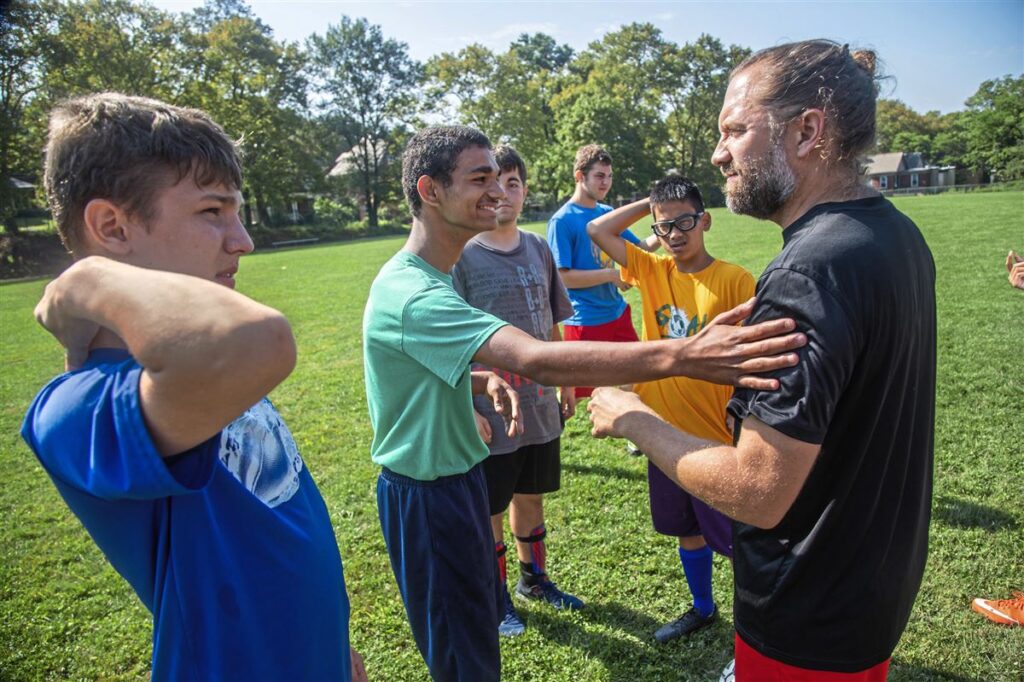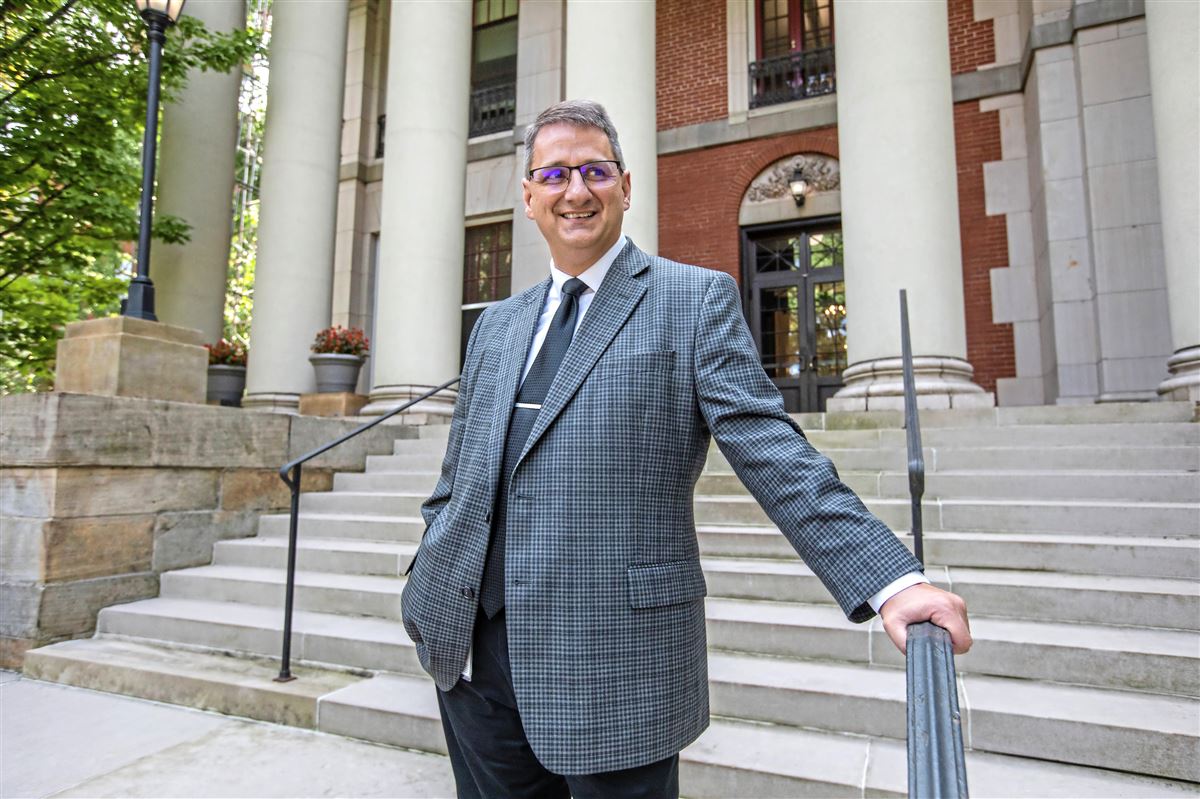In the summer of 1868, historical documents state that “a little deaf and dumb colored boy was brought” to the Mission Sabbath School connected to the Third United Presbyterian Church in Pittsburgh. Staff didn’t know how to educate the boy, Henry Bell, who appeared to be about 6 years old.
School superintendent Joel Kerr researched ways to help. On Sept. 6, 1869, a special school in a church basement was opened for Henry and 13 other deaf students, “many of them children of poverty.”
It was the start of the Western Pennsylvania School for the Deaf, the country’s first day school for deaf children and the 28th school for the deaf in the United States. The others were boarding schools, where students lived-in.
The nonprofit tuition-free school is celebrating 150 years of educating thousands of deaf and hard of hearing students, from preschool through high school, from all over the commonwealth, and occasionally from other states. The school has been in Edgewood since 1884.
A number of events will mark the 150th anniversary, including a visit from perhaps the most famous deaf person in the country.

Nyle DiMarco, 30, who has 976,719 followers on Facebook, is the 2015 winner of America’s Next Top Model and the 2016 winner of Dancing With The Stars. He’s coming to Pittsburgh on Oct. 26 for The 2019 Auction and Gala Celebrating 150 Years of Excellence. Mr. DiMarco uses American Sign Language and travels with an interpreter who enables him to communicate with people who do not know ASL.
ASL is a non-verbal form of communication that uses hands, fingers, facial expressions and body language.
Current enrollment at the Edgewood campus is 185 students, including 65 who live there. Another 215 attend classes at WPSD sites in Scranton, Hershey, Edinboro University and Camp Hill.
Enrollment reached highs of more than 500 students in the 1960s when there was a rubella (German measles) epidemic, said Steven E. Farmer, the school’s chief executive officer since July 2016.
Women who get German measles when pregnant have a very high risk of giving birth to children who are deaf. “I was one of those,” said Mr. Farmer, who has a doctorate in education. He uses American Sign Language to communicate, as does all the staff at WPSD. His interpreter is Josh Waterhouse.
“We employ an all-inclusive education environment,” said Mr. Farmer, who does not speak and says he is not proficient at reading lips. While ASL, oral speech and lip reading skills are taught in the school, it is up to students to decide how they wish to communicate, and that can include using portable computers and tablets.
Some students have cochlear implants that enable them to hear, but the surgical procedure is a personal choice and is not “pushed” onto students.
More than 90 percent of deaf children are born to “hearing parents,” so the Western Pennsylvania School for the Deaf makes ASL classes available to family members.
The school shares archival documents and books that are interesting, but sometimes sketchy. For instance, there is no detail about the family and background of Henry Bell, the first student.
Details about the school’s growth include the fact that after 1869, enrollment rose steadily, and the school moved to Turtle Creek.
Following a massive fund-raising campaign, 105 students on Oct. 1, 1884, moved to Edgewood, into a large building designed and built to meet all of their needs, including live-in quarters for boarding students.
The WPSD is still there on East Swissvale Avenue, on a 22 acre-campus that has the look and the ambiance of a lovely liberal arts college. The red brick main building with large white columns is surrounded by 20 other buildings, including two gymnasiums and a greenhouse.

The biggest structure, the main building, opened in 1901. It replaced the 1884 school building that was destroyed by fire on Dec. 14, 1899. The blaze started in the wing where male students lived. Cause of the fire was not determined. There were no deaths or injuries.
School historical records indicate the replacement building was paid for with $92,000 from the insurance company, $50,000 from the Pennsylvania legislature and $50,000 “collected,” presumably from donors. It’s not clear if that was the total construction cost.
The campus is landscaped with ferns, native grasses, flowers and many huge old-growth trees, including oaks, maples and ginkgoes. The property is completely enclosed by a wrought iron fence, with security staff at the entrance gate.
“Our students are deaf. We can’t call out to them” if they would wander off campus into traffic, Mr. Farmer noted.
The 150th anniversary will be marked, on campus, at Sept. 6 Founder’s Day activities. And on Thursday WPSD will have a 10 a.m. ribbon cutting to mark the completion of the $2 million Children’s Center Expansion Project.

The center was started on the Edgewood campus in 2007 to serve children from birth through age 7, as well as their parents. The center includes therapeutic support services as well as classrooms for America Sign Language and other courses, an art room and a mini-theater.
The yearly operating budget for the school is $22 million, but students pay nothing to go there. The school gets funds from the state, from the school districts where the families of students reside, and generous donations from people who generally remain anonymous.
The message that WPSD strives to communicate to students, families and the community at large is a mantra frequently expressed by staff and alumni: “Deaf people can do anything except hear.”
Sept. 27 is the RSVP deadline for The 2019 Auction & Gala Celebrating 150 Years of Excellence, 6-9 p.m. at The Westin Convention Center, Downtown. Tickets are available at www.wpsd.org. Cost is $150 and includes dinner and entertainment. The $250 VIP Patron Ticket gets guests a 4:30-6 p.m. private meet-and-greet reception with Mr. DiMarco.
This article is published in post-gazette.com. Linda Wilson Fuoco: lfuoco@post-gazette.com or 412-263-1953.
